An Exceptional ‘Smoker’s’ Scrimshaw Narwhal Walking Cane
An Exceptional ‘Smoker’s’ Scrimshaw Narwhal Walking Cane
Engraved to the silver snuff box: ‘John Holland Potter’ and to the silver collar: G. Vickers, Sheffield
Narwhal, walrus, silver, tortoiseshell, bamboo, metal
Fine colour and patina
Hallmark 1827/8. Maker’s mark I T probably for Joseph Taylor
Britain
Early 19th Century
Size: 89.5cm long - 35¼ ins long
Engraved to the silver snuff box: ‘John Holland Potter’ and to the silver collar: G. Vickers, Sheffield
Narwhal, walrus, silver, tortoiseshell, bamboo, metal
Fine colour and patina
Hallmark 1827/8. Maker’s mark I T probably for Joseph Taylor
Britain
Early 19th Century
Size: 89.5cm long - 35¼ ins long
An Exceptional ‘Smoker’s’ Scrimshaw Narwhal Walking Cane
Engraved to the silver snuff box: ‘John Holland Potter’ and to the silver collar: G. Vickers, Sheffield
Narwhal, walrus, silver, tortoiseshell, bamboo, metal
Fine colour and patina
Hallmark 1827/8. Maker’s mark I T probably for Joseph Taylor
Britain
Early 19th Century
Size: 89.5cm long - 35¼ ins long
Engraved to the silver snuff box: ‘John Holland Potter’ and to the silver collar: G. Vickers, Sheffield
Narwhal, walrus, silver, tortoiseshell, bamboo, metal
Fine colour and patina
Hallmark 1827/8. Maker’s mark I T probably for Joseph Taylor
Britain
Early 19th Century
Size: 89.5cm long - 35¼ ins long
This extraordinary fully worked and ‘fluted’ narwhal tusk walking cane has multiple uses, though, firstly being a most elegant gentleman’s walking cane made from one of the most sought after materials in the first half of the 19th century. The owner would keep his ‘snuff’ in the silver container housed within the walrus handle; whilst visiting a tavern he could then unscrew the handle to reveal a long bamboo stem, which he could attach to a ‘clay’ pipe-head bowl to smoke his tobacco, purchased directly from the landlord. These pipe bowls were often then dispensed with, as they were produced in vast quantities. One should also take note of the engraved name; it has been suggested that Mr John Holland was in fact a factory owner - ‘Potter’ being his profession, rather than a double-barrel name?
At Airy Hill, near Whitby, the former home of Admiral Moorsom, Commander of the ‘Revenge’ at Trafalgar in 1805, there are two pillars built from twelve narwhal tusks brought to the port of Whitby, where the whaling fleet had been active since 1753.
The narwhal is an Arctic whale growing up to five metres long, a relative of the white beluga whale, but it is too small and without enough blubber for it to have been hunted commercially by the whaling fleets of the 19th century. However, the ‘scrimshanders’ prized the marine ivory tusk and often traded for them with the Inuit Eskimos, who traditionally took narwhal for their meat, oil and tusks which they made into harpoon shafts.
Once found in considerable numbers in the Greenland Sea, Dans Strait and Baffin Bay, the narwhal was habitually referred to by the Arctic whalers as the ‘unie’. The myth of the fantastical unicorn and its spiralling horn persisted well into the 19th century. As the strength of the legend slowly diminished and the true nature of the ‘horn’ was revealed, the tusks still continued to be regarded as rarities and exotic curiosities, and are so today.
At Airy Hill, near Whitby, the former home of Admiral Moorsom, Commander of the ‘Revenge’ at Trafalgar in 1805, there are two pillars built from twelve narwhal tusks brought to the port of Whitby, where the whaling fleet had been active since 1753.
The narwhal is an Arctic whale growing up to five metres long, a relative of the white beluga whale, but it is too small and without enough blubber for it to have been hunted commercially by the whaling fleets of the 19th century. However, the ‘scrimshanders’ prized the marine ivory tusk and often traded for them with the Inuit Eskimos, who traditionally took narwhal for their meat, oil and tusks which they made into harpoon shafts.
Once found in considerable numbers in the Greenland Sea, Dans Strait and Baffin Bay, the narwhal was habitually referred to by the Arctic whalers as the ‘unie’. The myth of the fantastical unicorn and its spiralling horn persisted well into the 19th century. As the strength of the legend slowly diminished and the true nature of the ‘horn’ was revealed, the tusks still continued to be regarded as rarities and exotic curiosities, and are so today.
Ex Private Scottish collection
An Exceptional ‘Smoker’s’ Scrimshaw Narwhal Walking Cane
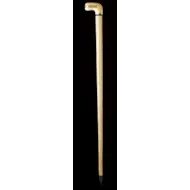
SOLD

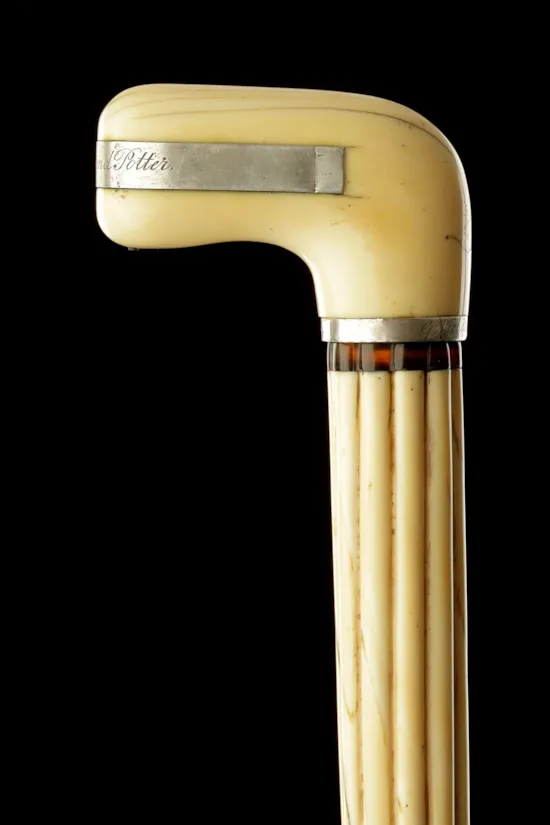

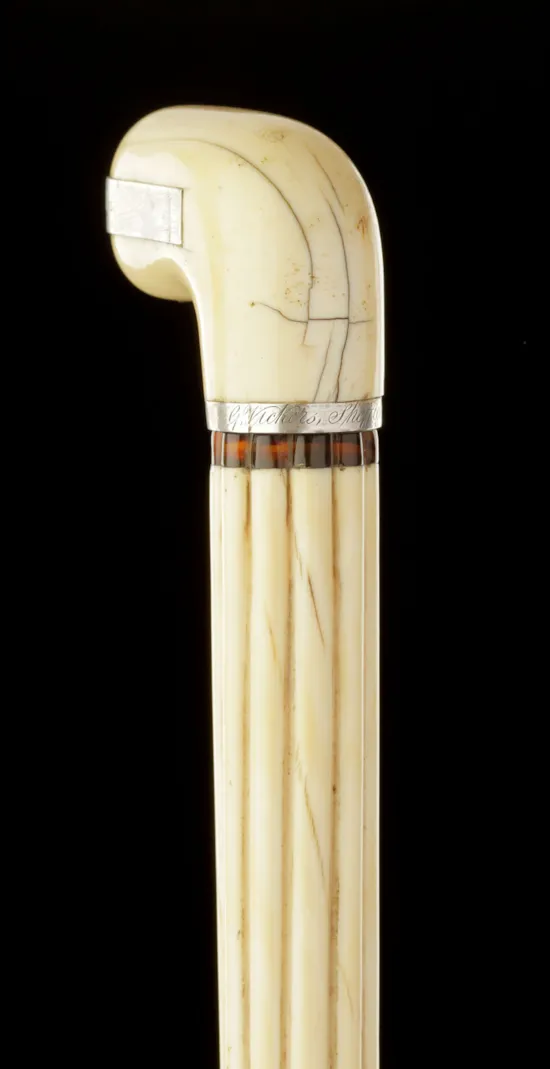
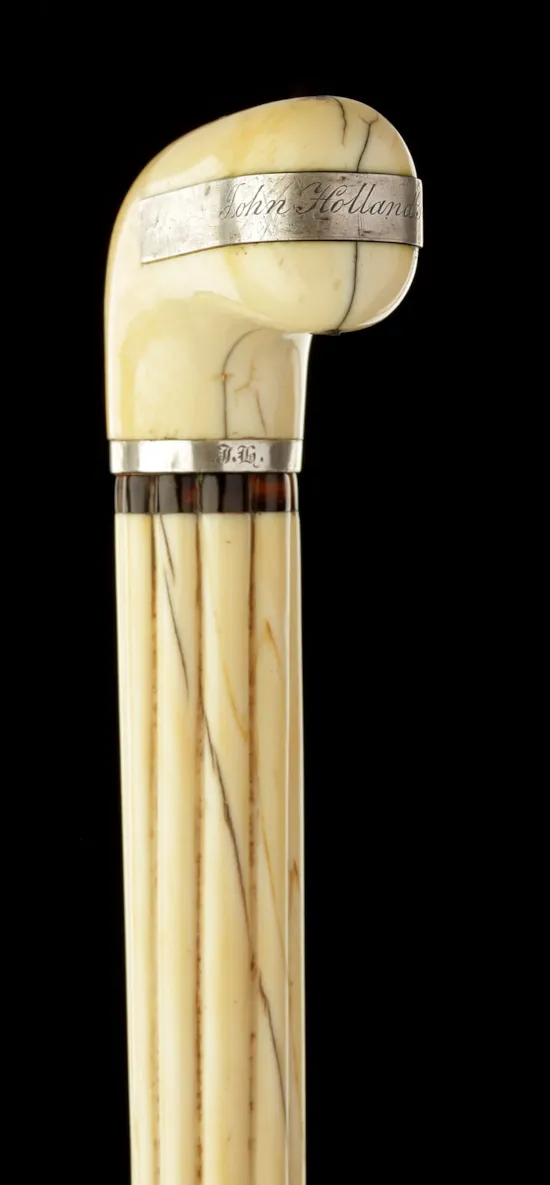
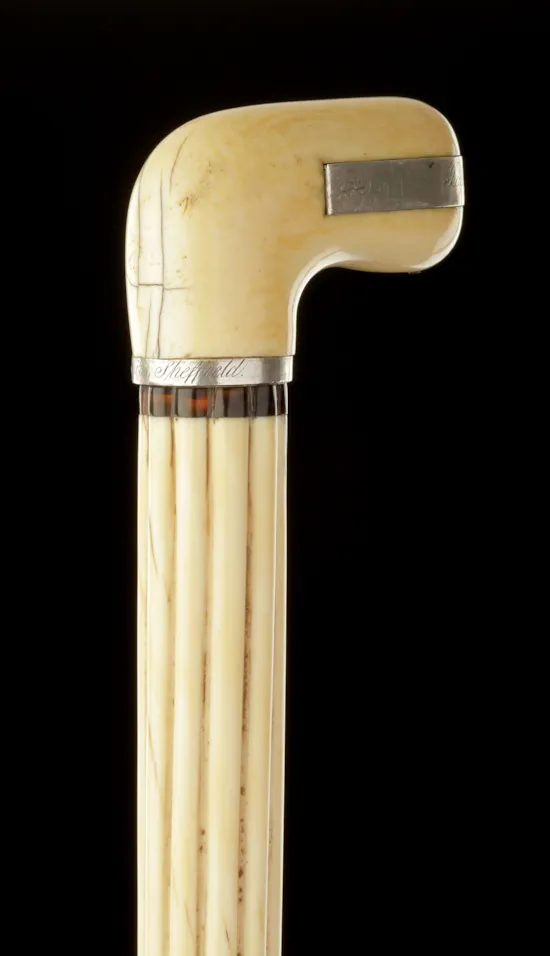
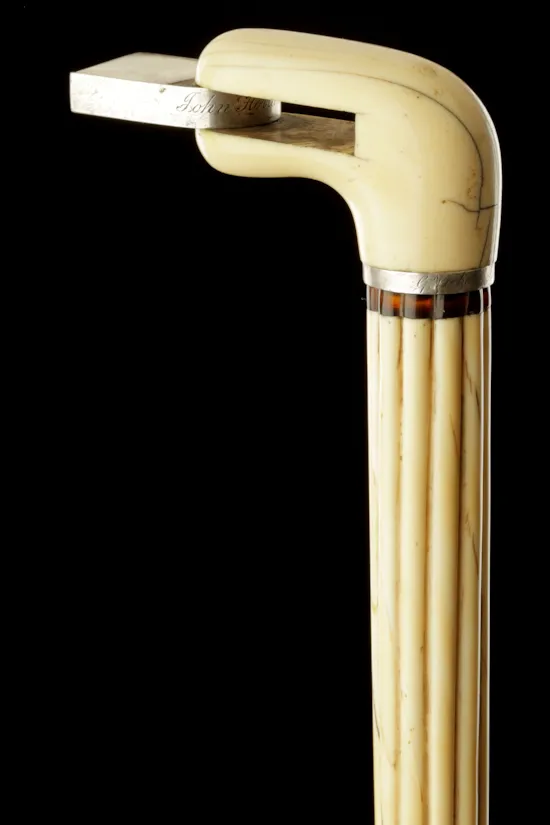
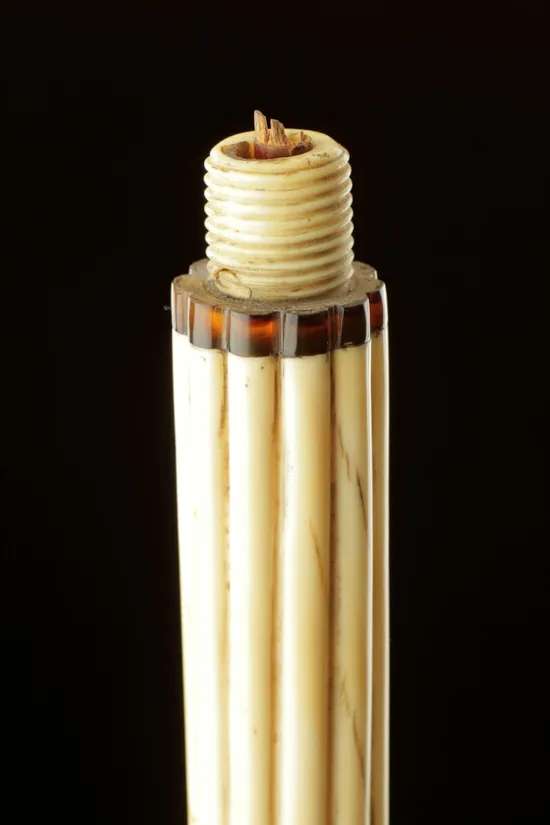
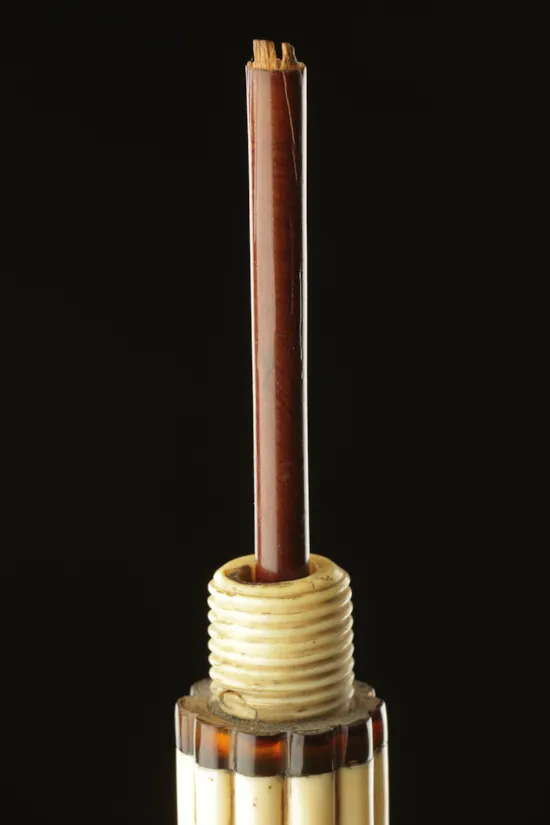











YOU MAY ALSO LIKE

